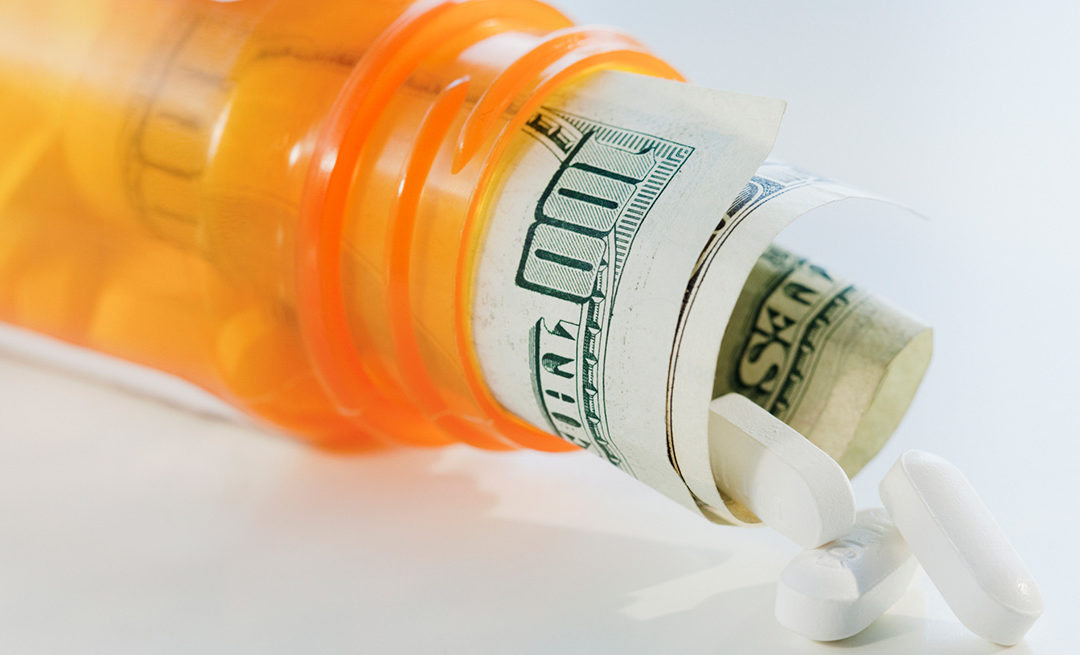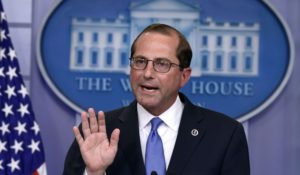With prescription drugs approaching 20% of total medical costs, patients, insurance companies, and government bodies are finally putting pressure on the pharmaceutical industry. Maybe hiring former pharmaceutical executive Alex Azar as Secretary of Health & Human Services will put more pressure for reform. Alex Azar made a strong statement on May 14th, 2018 giving consumers hope:
“For too long, there’s been a lot of talk on drug prices, and no action. Drug companies have insisted we can have new cures or affordable prices, but not both. I’ve been a drug company executive—I know the tired talking points: the idea that if one penny disappears from pharma profit margins, American innovation will grind to a halt. I’m not interested in hearing those talking points anymore, and neither is the President.”
For Secretary Azar, high drug prices come down to multiple factors and “attempting to squeeze one end of the balloon won’t lead to lasting change”. These factors include high list prices, overspending by government programs, high out-of-pocket costs and the reliance on foreign governments on US pharmaceutical research and development.
To combat the high drug prices, Secretary Azar lists four strategies: “improved competition, lowering out-of-pocket costs, enhanced negotiation, and incentives for lower list prices”. He elaborates by focusing on Medicare Part D where negotiating powers on drug prices are minimal. Medicare Part D is a prescription drug plan and offered privately by insurers to complement Medicare Part A (hospitals, surgery, lab tests, hospice care) & Part B (doctor visits, outpatient care, preventative services). Each insurer’s Part D plan has its own unique drug formulary or lists of drugs it covers and each drug is ranked under a tier system from 1-4 (generic to specialty). Each plan has its own list of covered drugs and some drugs may be Tier 3 on one plan yet a Tier 2 on another plan so you should always do a drug formulary search before deciding on a prescription drug plan.
Currently, Medicare Part D plans have discounts on prescriptions of 0-6% compared to the typical 20-30% discount found in private health insurance plans. Secretary Azar wants to give Medicare Part D insurers the same negotiating powers as the health insurers to lower drug costs. Azar wants to also go after the “protected classes” of drugs which constitute $30 billion in annual costs for Part D plans or roughly 10% of the entire nation’s drug costs. These drugs are protected from price negotiation and are covered by all the prescription drug Part D plans due to their major importance in treating serious conditions. The protected classes are:
- Immunosuppressants
- Antidepressants
- Antipsychotics
- Anticonvulsants
- Antiretrovirals
- Antineoplastics
Health Secretary Axar suggests that these protected classes of drugs are better negotiated under private insurers compared to Medicare and he suggests we need to provide Part D plans better negotiating tools to help lower these costs. Some of these drugs under the “protected classes” cost as much as $700 a month with a Part D prescription drug plan yet the average Social Security monthly check comes out to just $1,400. This is completely unsustainable for many Medicare members who rely on these protected drugs for their daily living and those who rely on Social Security as their main source of income are especially affected.
It is not only Medicare Part D that needs price negotiation, we can see this in Medicare Part B as well which has no negotiation powers and covers doctor visits and outpatient care. Secretary Azar states, “Right now in Part B, essentially as soon as a drug is approved by the FDA, it’s covered. Medicare gets a bill for the drug, composed of the standard price plus a 6 percent markup.” Azar goes on to suggest that it may be better to merge Medicare Part B with Part D to combat this issue since Part D at least has some price negotiating powers. The main message here is that we need more competition and transparency around drug pricing.
One of the best tool for consumers to see what a prescription drug costs, which store offers the lowest price and if there is a possible discount available is Good RX. Knowing the upfront cost of a medication might also start the conversation with your doctor about suitable lower priced alternative medications.
At Solid Health Insurance Services, we are always happy to help our clients find the right insurance for their prescriptions as well as medical and financial needs. Let us help you with your prescriptions to find the best plans for your unique needs. Please do not hesitate to contact us at 310-909-6135 or email us at info@solidhealthinsurance.com and we would be happy to tailor your plans to your needs.


